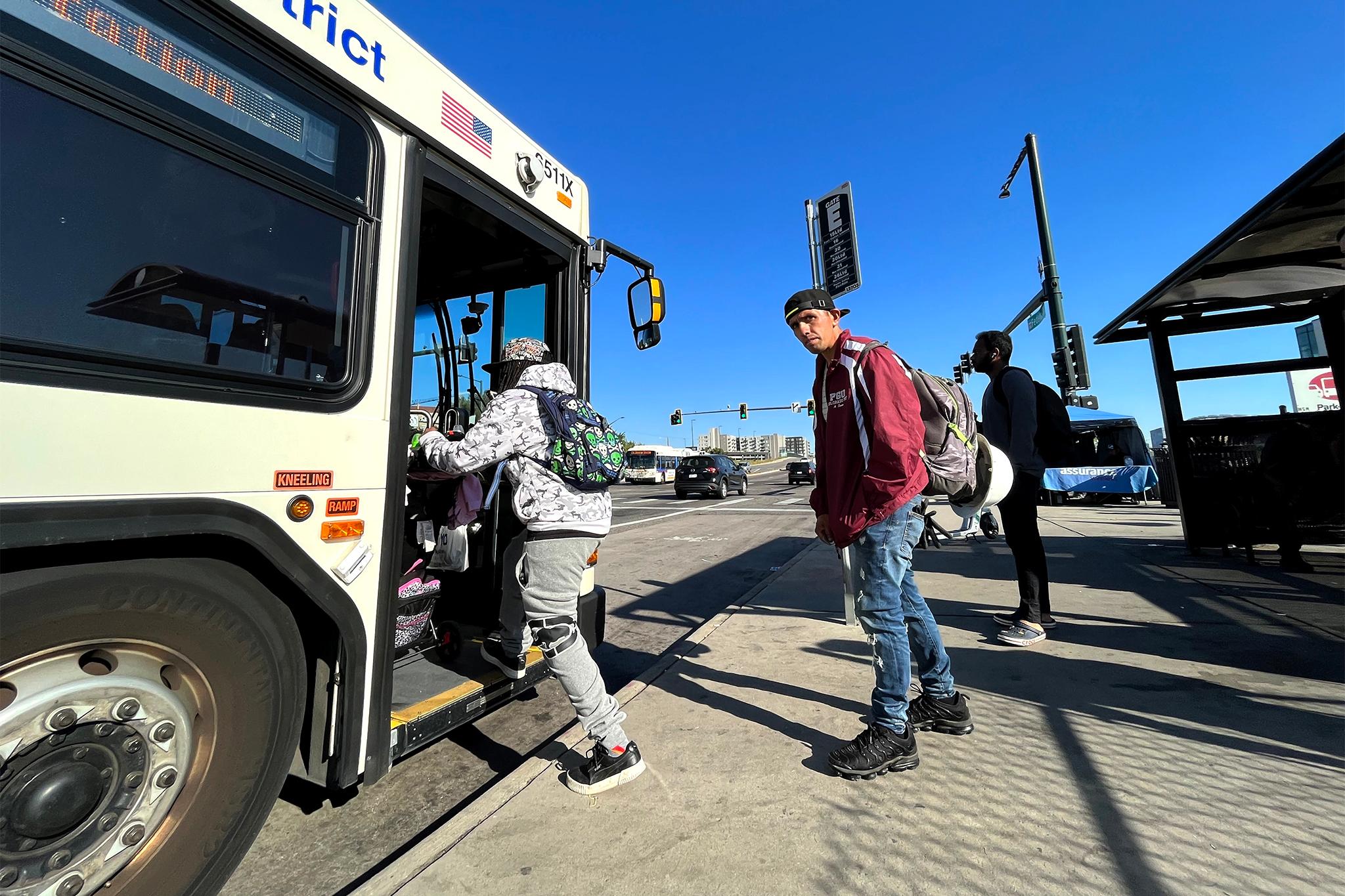Have you ever been on a bus that seemed to stop on every block, gritting your teeth as the driver waited for boarding riders to count out their change? Or perhaps you've closed your eyes and prayed that the next stoplight would stay green so the bus could please just keep moving.
State and regional transportation bigwigs decided more than a year ago that they wanted to make public transit buses on some of the Denver metro's busiest roads a lot faster.
And you may recall that Denver officials have been talking about speedier buses on East Colfax for more than a decade.
These projects fit into various city and state goals of reducing pollution and promoting multimodal transportation. They're also notable because they could infringe on car space -- parking spots and travel lanes, for example -- which is something that Colorado transportation officials have historically been hesitant to do.
On Wednesday, key players gathered at the Colorado Department of Transportation's headquarters in Denver to tout these bus rapid transit projects. But they weren't able to answer basic questions, such as how often buses will run and whether buses will have their own lanes.
Still, big transportation projects take years -- and sometimes decades -- to plan, fund and build so perhaps we should exercise some patience. In the meantime, let's do a quick recap of what bus rapid transit is and where Denverites can expect to see it in the coming years.
City buses don't have to be slow
For years I thought public transit buses had to be slow. And then I rode bus rapid transit lines in Minneapolis, where buses have been optimized to move faster through the heart of the city than I thought was possible.
Bus stops are spaced out, and they feel like mini train stations where passengers can buy fares before the bus arrives and then board through any door. Traffic signals give priority to buses over cars. And to meet the internationally accepted BRT standard, buses have their own lanes too.
"It's a very viable transportation mode that really supports taking vehicles off our congested network and overstressed roads and provides a safer option for travel," said Jessica Myklebust, who is in charge of CDOT's Denver-area operations.
The BRT network will be called the "Lynx" and will likely be operated by the region's main transit provider, the Regional Transportation District.
"I think it's well overdue," Debra Johnson, RTD's general manager and CEO, said of the BRT plans. "We have to provide mobility options that are conducive to the region."
Where rapid transit bus lines are planned in Denver
Denver and RTD have been planning an overhaul of East Colfax from Broadway to Interstate 225 for years. While the project will eat up parking spaces and two travel lanes, it promises to move more people on buses much faster -- and with more consistent travel times.
The Denver City Council is also moving to rezone the corridor to make it more pedestrian and transit friendly.
Construction could begin as early as the summer of 2024, said Adam Phipps, executive director of Denver's Department of Transportation and Infrastructure. It's expected to wrap up in 2026 or early 2027.
CDOT is taking the lead on the Federal Boulevard and Colorado Boulevard BRT projects. The Federal line will run from 120th Avenue in Westminster to Dartmouth Avenue in Denver. Buses will likely have their own lanes for some of that stretch, according to preliminary planning work from the city of Denver.
The Colorado Boulevard line is a bit further behind in the planning process. It will likely run from the RTD A Line commuter rail station near Interstate 70 to the light rail station at Interstate 25. It's not clear if buses will have their own lanes on Colorado Boulevard.
"We have some work to do and we really want to listen and hear the input of the community and stakeholders before we make decisions on that," Myklebust said.
The Federal line could see less intensive street reconstruction than the East Colfax line will, said CDOT executive director Shoshana Lew. The agency is trying to stretch its dollars while also doing enough to improve the transit experience, she said.
"Being able to do more with less will enable us to do more overall," she said.
The East Colfax line could get more than $100 million in federal dollars. And the Federal Boulevard line has been accepted into a federal grant program that could mean big dollars for that project, too.
"It's an exciting milestone because it kicks off a partnership," said Federal Transit Administration regional administrator Cindy Terwilliger.
The Federal and Colorado lines must be up and running by 2030 to comply with state greenhouse gas mandates, CDOT officials said.
Buses already run at least every 15 minutes at peak times on those two corridors. Lew said buses should run more often on BRT lines than they do on traditional bus lines, but added that there's no "magic number" the agency is targeting.
CDOT and other agencies are also planning BRT lines on Highway 119 between Boulder and Longmont, Highway 7/Arapahoe Road between Boulder and Brighton, and East Colfax east of I-225.
"The vision is to have it be a multimodal corridor where it's both inviting to get around and frequent enough that people utilize the service," Lew said.













